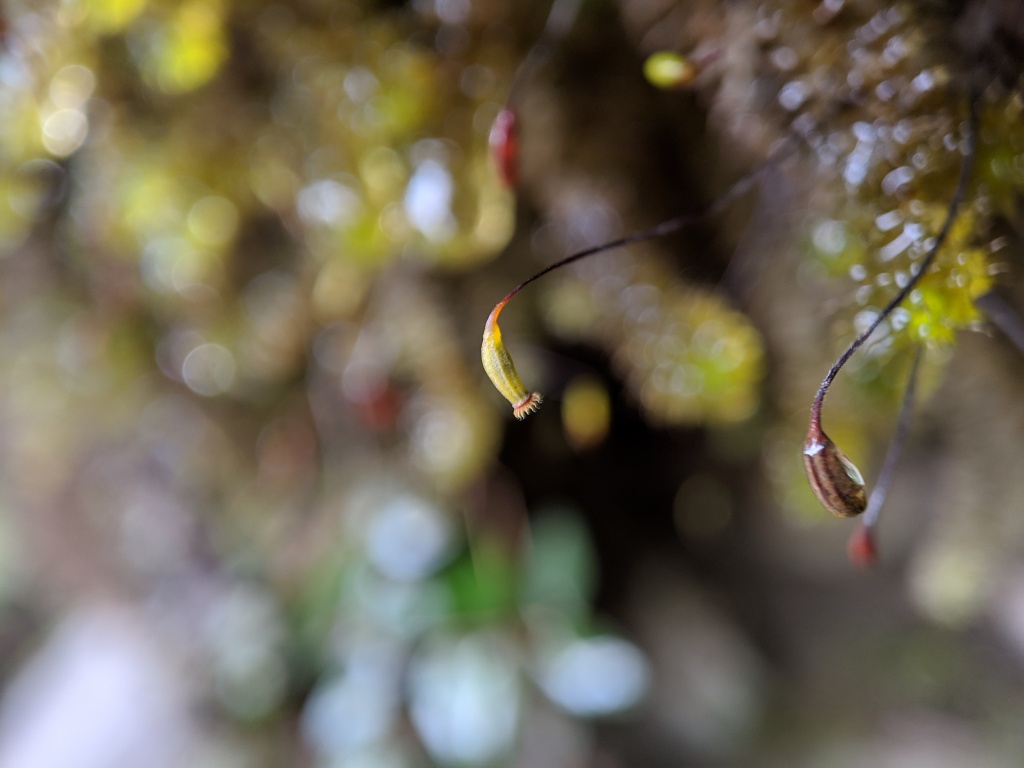Ptychomnion
Dioicous or phyllodioicous. Asexual propagules absent. Tufts or loose turves or mats on soil, logs or tree trunks. Primary stem creeping and stolon or rhizome-like or deteriorating and inconspicuous; secondary stem ascendant or erect, simple or irregularly or dichotomously branched, red, with rhizoids restricted to base; paraphyllia scarce, foliose, lanceolate to subulate; central strand absent. Leaves broadly ovate to ovate-lanceolate, arranged around stem and facing all directions, widely spreading and often squarrose when moist, rarely falcate-secund (not in Victoria), scarcely altered when dry, with papery texture, sometimes plicate and rugose, not decurrent; apex acuminate, often twisted; costa short and double or absent; margin plane or recurved at base (not in Victoria), entire throughout (not in Victoria) or serrulate (not in Victoria) or serrate in acumen, sometimes also in basal half (not in Victoria); laminal cells linear or vermicular, becoming rectangular near base, smooth; alar cells indistinct, forming a small and weakly defined group. Capsules inclined to pendent, curved, cylindric to ovoid, exserted, longitudinally 8-ribbed, with an annulus. Calyptra cucullate. Operculum long-rostrate, as long or longer than capsule. Peristome double; endostome slightly longer than exostome, with a high basal membrane; cilia present.
Four species shared between the Pacific Islands in the Southern Hemisphere, Argentina, Chile, the Falkland Islands, Tristan da Cunha, Prince Edward Islands and eastern Australia; one species in Victoria.
 Spinning
Spinning

